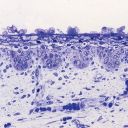Cytochrome P450 Inducers & Inhibitors
Cytochrome P450 Inducers & Inhibitors
The main ones can be remembered using "CRAP GPs spend all day on SICKFACES.COM".
Cytochrome P450 Inducers
These induce CYP450 activity, and thus reduce the concentration of drugs which are metabolised by this system.
Carbemazepine Rifampicin Alcohol (chronic use) Phenytoin Griseofulvin Phenobarbitone Sulphonylureas, St John's Wort, Smoking
Also topiramate.
Cytochrome P450 Inhibitors
These inhibit CYP450 enzyme activity and thus increase the concentration of drugs which are metabolised by this system.
Sodium valproate Isoniazid Cimetidine Ketoconazole Fluconazole Alcohol (acute use), Amiodarone, Allopurinol Chloramphenicol Erythromycin Sulfonamides, SSRIs Ciprofloxacin Omeprazole Metronidazole
Also grapefruit, cranberry juice, diltiazem, verapamil, clarithromycin.
Common Interactions
Medications which commonly interact with CYP450 inhibitors and inducers are:
Warfarin
Phenytoin
Combined Oral Contraceptive Pill (COCP)
Theophylline
Corticosteroids
Tricyclic antidepressants
Statins
Lamotrigine
Midazolam
More Posts from Bethiniancorpuscle and Others
Common ototoxic medications
"FAV Q&A"
Furosemide (and other loop diuretics) Aminoglycosides Vancomycin Quinine Aspirin
Management of acute MI
Reduce anginal pain
Morphine (+ anti-emetic)
Oxygen
Nitrate
Initiate reperfusion
Anti-platelet (aspirin, clopidogrel)
Thrombolytic (rtPA)
Primary angioplasty (PTCA)
Anticoagulant (heparin)
Protect myocardium
Beta-blocker
ACE inhibitor
Secondary prevention
Aspirin
Lipid-lowering (statin)
Lifestyle

Helpful mnemonic foe MI treatment.

The renin-angiotensin system that helps regulate the constriction of blood vessels and blood pressure.
Hypokalaemia ECG changes
U have no pot and you have no T but you have a long PR and a long QT
Low potassium causes:
U waves (small deflection immediately after T wave)
Flattened/inverted T waves
Prolonged PR interval
Apparent prolonged QT interval (due to fusion of T and U waves)
Also:
Increased P wave amplitude
Widespread ST depression
Carpal bones mnemonic
So Long Till Pinky, Here Comes The Thumb
Scaphoid
Lunate
Triquetrum
Pisiform
Hamate
Capitate
Trapezoid
Trapezium
(going anti-clockwise in this diagram)

Causes of drug-induced lupus
SHIP
Sulfasalazine & Sulfonamide Hydralazine Isoniazid Procainamide & Phenytoin
This is by no means a definitive list (they are many!) but these are some of the most common causes.
Haemosiderin staining
"Haemosiderin staining" describes orange/red/brown skin hyperpigmentation caused by haemosiderin (an iron-containing pigment found in blood) leaking into the skin.
Causes:
Chronic venous insufficiency (in lower legs)
Skin inflammation
Trauma e.g. wound, fracture, surgery
Pigmented purpuric dermatoses
Haemochromatosis
Haemosiderin staining may be exacerbated by anticoagulant use as this increases extravasation (leakage) of red blood cells into the skin.
See an example here.
I don’t know what stage of the semester you’re at right now but let someone in exam period (me) give you some advice on revision: Start early. Early as in NOW. Start now to not end up like me
Causes of Acute Pancreatitis
In the UK and US, the main causes are gallstones and alcohol.
Use the mnemonic 'I GET SMASHED':
Idiopathic
Gallstones
Ethanol
Trauma
Steroids
Mumps / Malignancy
Autoimmune
Scorpion stings
Hypercalcaemia / Hypertriglyceridaemia / Hypothermia
ERCP
Drugs (including azathioprine, mesalazine, bendroflumethiazide, furosemide, steroids, sodium valproate)
Distribution of calcium in the body
Bone calcium (99%)
Ca^2+ and PO4^3+ form hydroxyapatite
Plasma calcium
Diffusible pool
~50% of plasma calcium is free/unbound ionic Ca2+ (physiologically important form)
~10% of plasma calcium is complexed with small molecular weight compounds (citrate, phosphate)
Non-diffusible pool
~40% of plasma calcium is bound to calcium-binding proteins and plasma proteins (albumin)
The body utilises plasma albumin-bound calcium as a circulating reserve
-
 macchiato021 reblogged this · 3 months ago
macchiato021 reblogged this · 3 months ago -
 nostedil liked this · 4 months ago
nostedil liked this · 4 months ago -
 bnnlil reblogged this · 4 months ago
bnnlil reblogged this · 4 months ago -
 eflatunleylak liked this · 5 months ago
eflatunleylak liked this · 5 months ago -
 toalwaysoppose reblogged this · 6 months ago
toalwaysoppose reblogged this · 6 months ago -
 toalwaysoppose liked this · 6 months ago
toalwaysoppose liked this · 6 months ago -
 rairaihaspocketsofunicorns liked this · 8 months ago
rairaihaspocketsofunicorns liked this · 8 months ago -
 davincisbirthday liked this · 8 months ago
davincisbirthday liked this · 8 months ago -
 sorianis liked this · 8 months ago
sorianis liked this · 8 months ago -
 turquoiseeyesandsilverskies liked this · 8 months ago
turquoiseeyesandsilverskies liked this · 8 months ago -
 bethiniancorpuscle reblogged this · 8 months ago
bethiniancorpuscle reblogged this · 8 months ago
